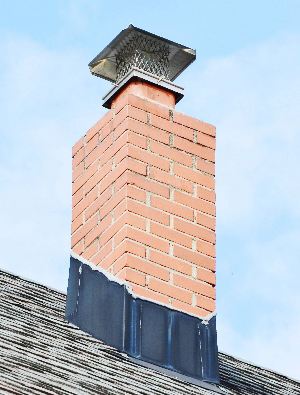Chimney Inspections
Wood Energy Technology Transfer (WETT) Inspections for Homeowners in Halifax, Nova Scotia
Proudly Providing Inspection Services for Halifax, Dartmouth, Eastern Passage, Armdale, Timberlea, Lake Echo, Parters Lake, and Surrounding Areas
With a Wood Energy Technology Transfer (WETT) inspection from Global Property Inspections, your inspector can give you an inside look at your solid-fuel-burning system, some of which may include your fireplace, wood-burning stove, chimney, and central heating system. Owner and Inspector Mike Hogan is a WETT-Certified Inspector, professionally trained to investigate any concerns with system functionality, for insurance purposes, or in coordination with a real estate transaction.
The inspector will be able to help you assess which level of inspection is required based on your needs. For most insurance and real estate transactions, a Visual (Level 1) inspection may be sufficient.
Level 1: Visual Inspection
“Readily Accessible” WETT inspections are visual in nature, investigating readily accessible or easily reached components and systems. In particular, your Carson Dunlop inspector may investigate the following:
- Clearance Requirements: All solid-fuel-burning systems must comply with clearance standards and maintain a safe distance from any combustible material.
- Stove, Damper, and Clean-out Doors: Your inspector will measure clearances, open stove doors and all ground-accessible dampers/clean-out doors, visually inspect the chimney from the ground and inspect the easily visible portions of the flue (such as the first tiles of an open fireplace, or top section if the inspector has accessed the roof).

If during the course of the inspection, the inspector sees signs of concern, a technical or “invasive” inspection may be recommended. Inspection or service of a solid-fuel-burning system may result in a recommendation for further action, including but not limited to, repair or replacement of system components and/or sweeping of the venting system.
After the inspection of your wood-burning system, your certified WETT inspector issues an inspection report that details where an installation does or does not meet the requirements of the manufacturer’s installation instructions and the appropriate codes.
What Do We Look for During a Chimney Inspection?
- Creosote Buildup: As a fire burns in the fireplace, smoke rises into the chimney’s interior, and some of that condenses and collects on the walls of the chimney as creosote. Creosote is highly flammable, so when too much of this sticky, flakey substance has a chance to build up, it can be a real concern.
- Masonry Damage: If you have an older chimney that’s been operated without a liner, damage to the chimney’s masonry, bricks and mortar joints can occur over time. We can assess the interior, identify damage, and recommend further action to keep the chimney’s structure sound.
- Chimney Liner Damage: Your chimney liner can develop cracks over time, which can trap creosote and lead to higher risk of a chimney fire.
- Obstructions: If your chimney has been operated without a chimney cap, various types of debris can enter through the top and stop smoke from drafting correctly. We check for evidence of bird nests, small animals, tree debris, and more to determine if the chimney is clear and functioning properly.
- Evidence of Chimney Fire: Small chimney fires can start and extinguish themselves quickly, without a homeowner ever knowing. These can still cause damage, and the best way to determine if your chimney has had fires is with a thorough chimney scan.
Schedule Your WETT Chimney Inspection Today
To get a better picture of your solid-fuel-burning system, you need the help of a professional. Your Carson Dunlop inspector can identify issues before they lead to big problems. Protect your home and order a WETT inspection today.


